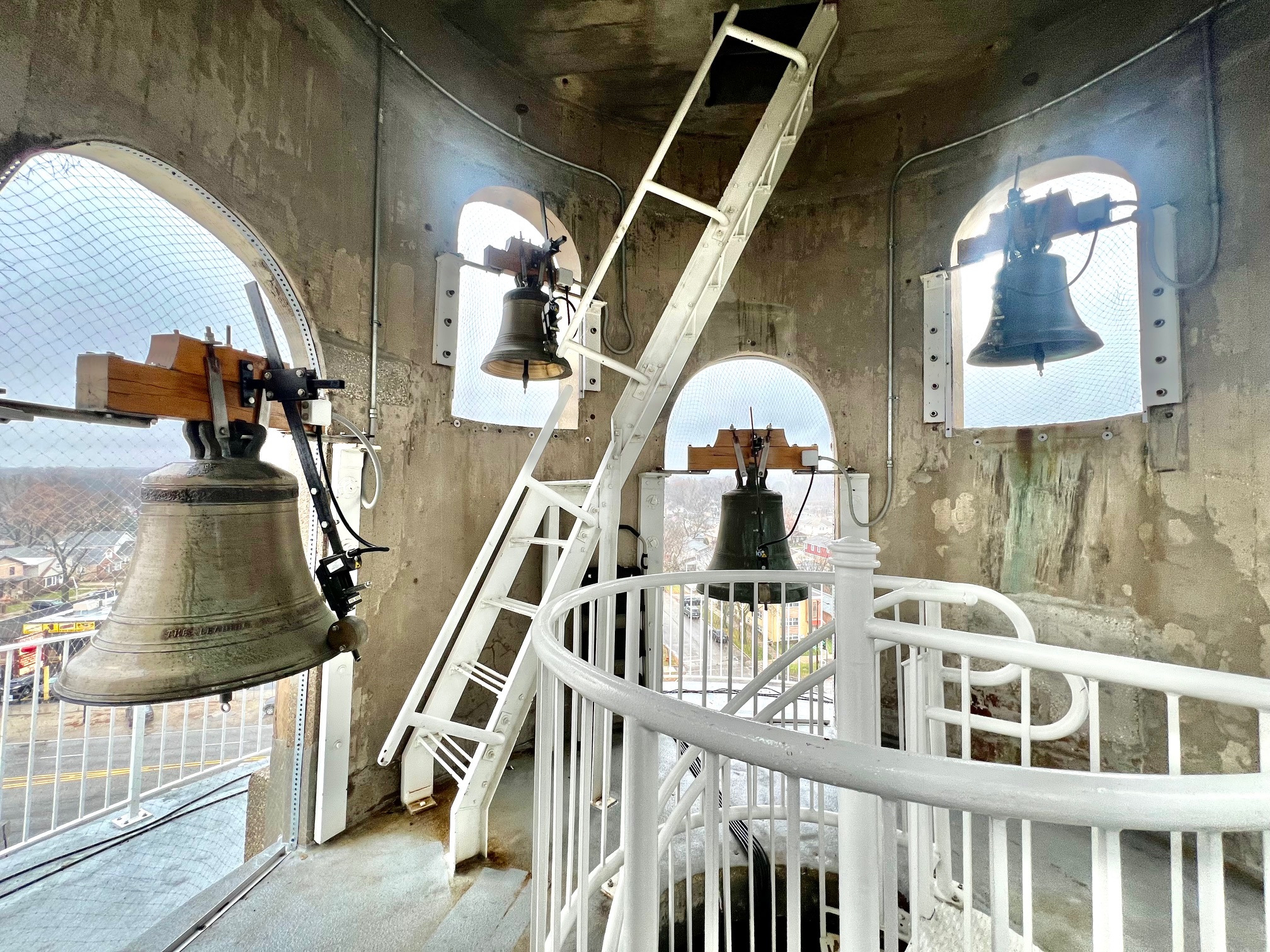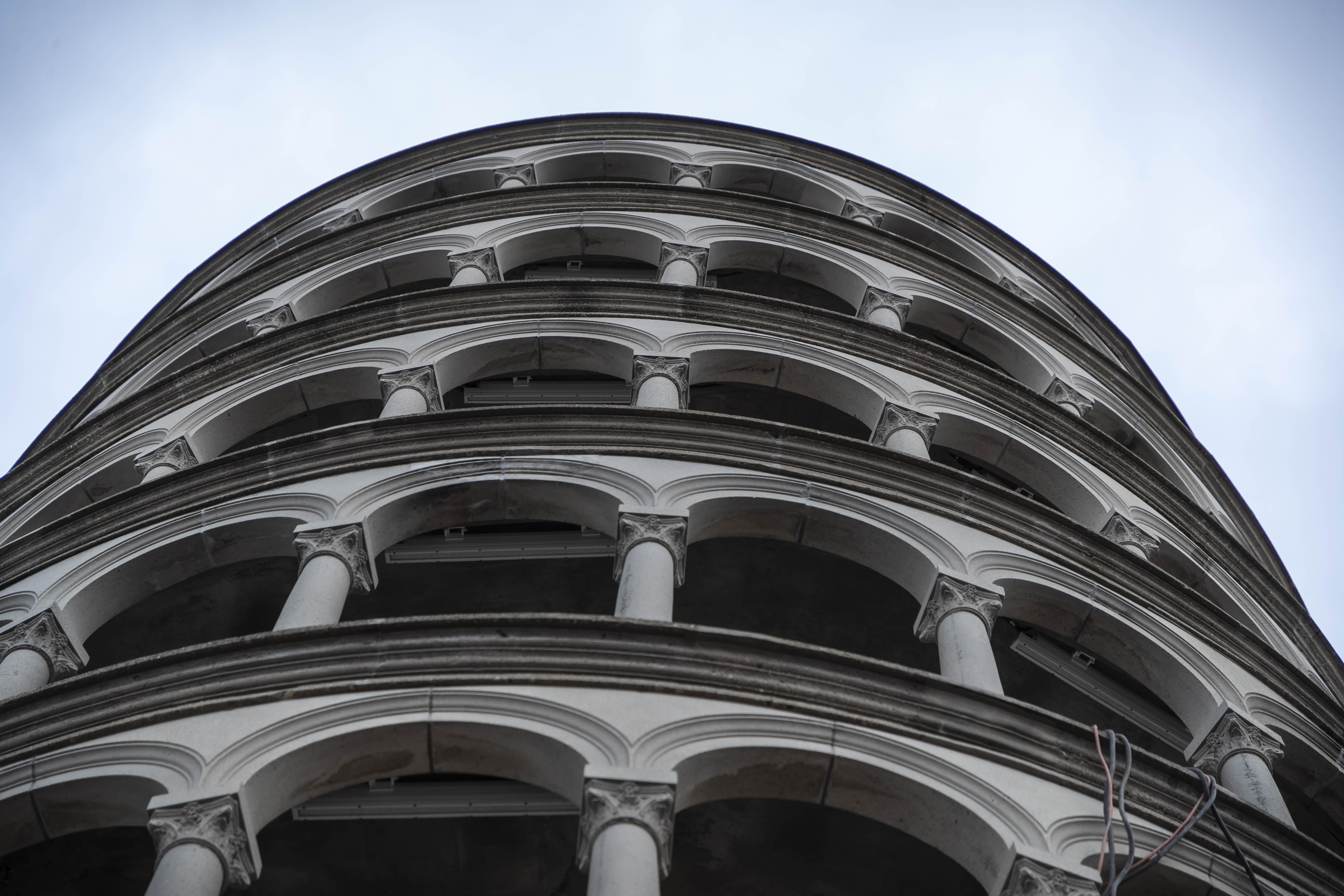Click the "LISTEN" button above to hear reporter Dennis Rodkin discuss this story.
Many Chicago-area drivers have been taking alternate routes this year because of construction on the Kennedy Expressway. One such driver, Maxine Gere of Lincoln Park, said she took a detour through Niles and saw a monument more closely associated with Italy.
Going west on Touhy Avenue, drivers pass a Target, an Aldi and the Leaning Tower of Pisa — or something that looks just like it. The slender, nine-story structure is encircled most of the way up by a colonnade and leans at about 5 degrees off vertical.
For people who often pass the Leaning Tower of Niles, the replica might have lost its novelty, but after Gere’s first sighting she asked WBEZ’s Reset to look into the building’s history.

While the tower now stands amid big box stores and other businesses, it was originally the centerpiece of a 22-acre park filled with trees, fountains and pools. Ilgair Park had a big, metal water tower the owner, Robert Ilg, concealed by having it wrapped in concrete and turned into a roughly half-sized replica of the famed Italian landmark.
The Leaning Tower of Pisa is a bell tower begun in the 12th century and completed, after several attempts to stop it from leaning, in the 14th century.
Robert Ilg , owner of the electric fan company Ilg Electrical Ventilating Company, built Ilgair Park as a recreation area for his employees.
At his factory, eight miles away at 2850 N. Pulaski Road, Ilg had long been a leader in good relations with his workers. In the 1910s — when his company was only a decade old — it established channels for employees to discuss benefits, safety and other concerns. The Ilg Electrical Ventilating Company also had a loan program for workers who needed it.
This concern for wellbeing extended to customers: Ilg’s fans were advertised as a way to keep air circulating on a factory floor or a home kitchen to remove dust and other annoyances.
So it’s no surprise that Ilg would build a place for his employees to relax outdoors, or that he would want its water tower to look less like a metal-legged intrusion on the view. Construction on the tower started in 1932 and was completed in 1934, six centuries after the one in Pisa was finished.
Ilg went for authenticity. Starting with the ground floor, the floors on every level lean, making the walk around the exterior dizzying because of the tilted walkway. At the top are seven bells, just like the tower in Pisa.

Three of the Niles bells are antiques — one is dated 1623 and another 1747 — bought in Italy for Ilg’s tower. The other four bells were made in the 2010s for a restoration, in part as replacements for two historical bells that couldn’t be restored and are on display at ground level.
From the top of the tower, 94 feet off the ground, the downtown Chicago skyline is visible on a clear day. On a cloudy day like the one when Reset visited, you can at least see a mile east to Niles’s other architectural landmark, the glassy Shure corporate headquarters designed by the late Helmut Jahn in 2000.
Along the narrow walkway, you pass the doors to the tower’s interior rooms, each empty and 28 feet in diameter with a tilted floor. It’s not clear these rooms were ever used for anything but storage.

The tower isn’t open for people to walk up to the bells. But visitors can sit in the small park at the structure’s base to hear the bells ring at 9 a.m., 12 p.m., 3 pm and 6 p.m.
Listening to music here has been a tradition since the 1930s, when operas and symphonies were performed in Ilgair Park.
But by 1954, Ilg wanted to turn his land into a trailer park and motel. The village of Niles turned him down. Five years later, he and his wife, Marie, were retired and living in California and the family donated most of the park to the YMCA, which built the Leaning Tower Y immediately north of the tower.
In the 1990s, the village started taking care of the aging concrete tower, and in 2015 bought it from the YMCA for $10. That year the village rolled out a plan to turn the YMCA building back to park land as part of a new walkable urban core for Niles. The leaning tower would have been the focal point.

That effort hasn’t continued, Katie Schneider, the town’s community engagement coordinator, told Reset. The YMCA’s six acres is for sale, after the Y closed first the recreation center in 2020 and the eight-story, 140-unit residential building in 2021.
Although the next use of the acreage next to the tower is uncertain at the moment, Maxine Gere told Reset she thinks Niles has done well by its odd landmark. She said she’s “totally impressed that the town was totally invested in making this tower a feature in which to take pride.”

Dennis Rodkin is the residential real estate reporter for Crain’s Chicago Business and Reset’s “What’s That Building?” contributor. Follow him @Dennis_Rodkin.
K’Von Jackson is the freelance photojournalist for Reset’s “What’s That Building?” Follow him @true_chicago.



